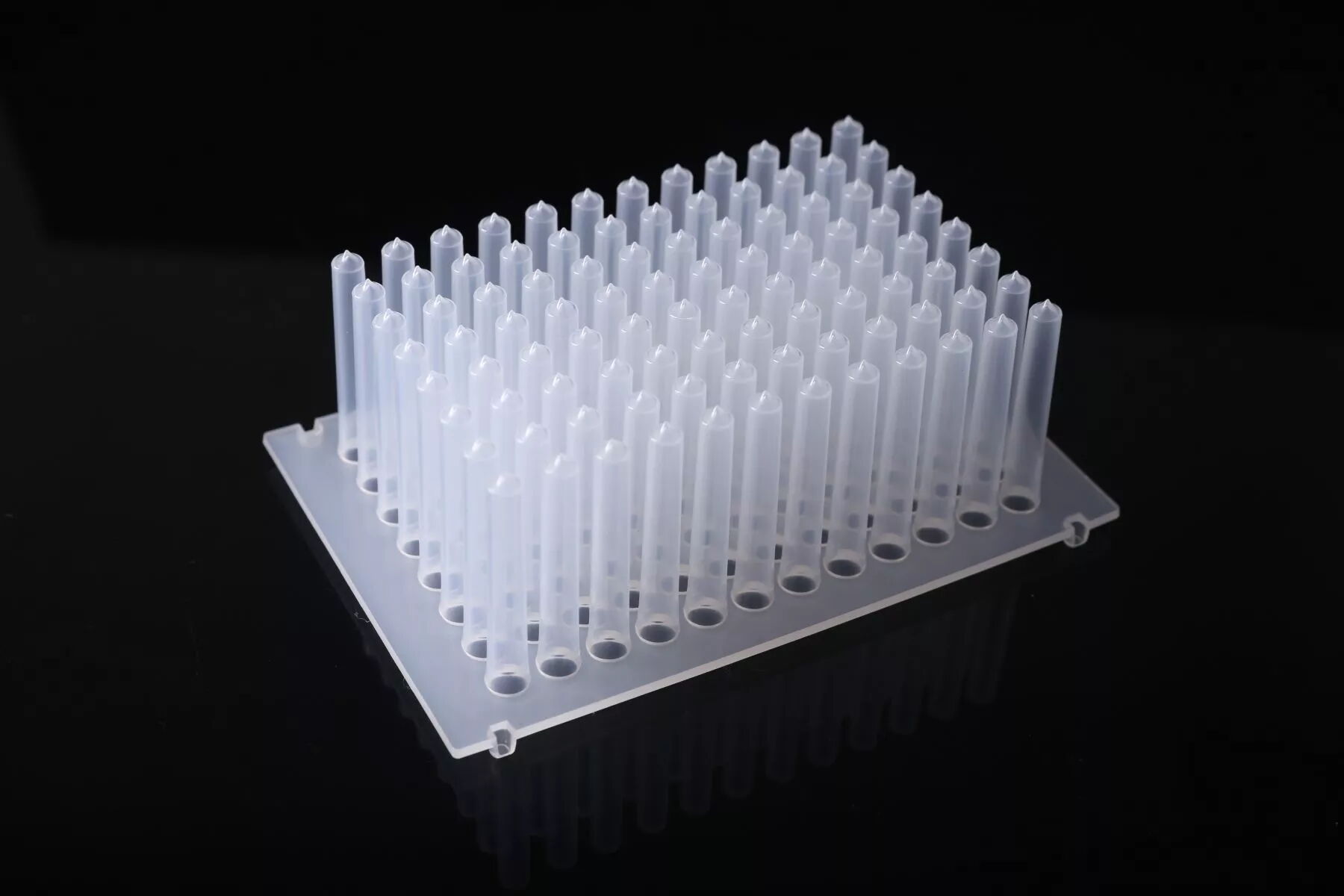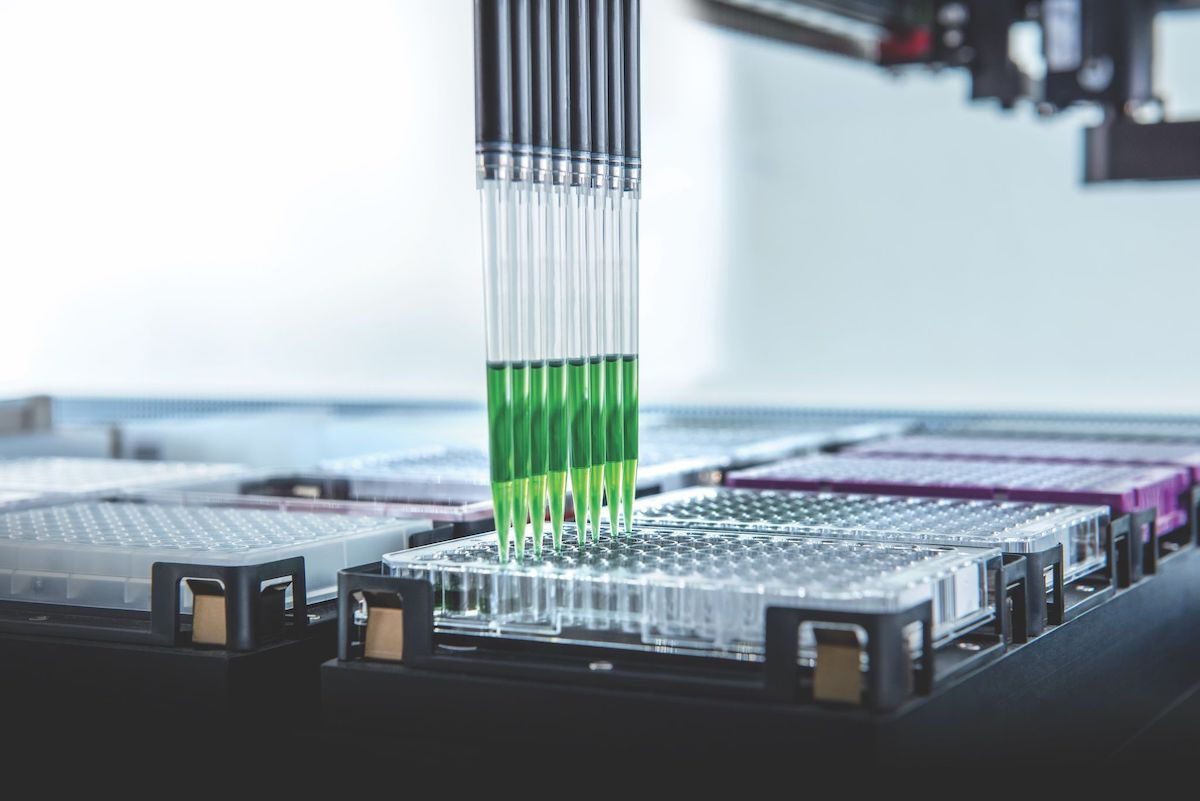Classifications of Pipette Tips
Feb 27, 2023
The pipette tip is used with a pipettor when used, and is mainly used in various pipetting. In the laboratory, the pipetting of liquid is the basic operation of all experiments, so the pipettor and its matching pipette tips are the most commonly used consumable products in the laboratory. To meet various needs for pipetting, its types are also varied. Some of the more common types of pipette tips on the market are introduced in this article.
Standard pipette tips
The standard pipette tip is the most common type and the most widely used. It can be used for almost all pipetting. This is the most economical type of tip. If there is no special requirement, you can generally use standard pipette tips to meet the most need for pipetting. Other types of pipette tips are also evolved from standard ordinary tips. There are generally many packaging forms for standard pipette tips, and there are three common types on the market, namely, bagged, boxed, and stacked types. Generally speaking, boxed products are sterilized, while bagged and stacked types are not sterilized. If special sterilization is required, you can directly purchase the boxed type, or put unsterilized bagged tips into an empty tip box for self-sterilization before use. Most of the pipette tips and their boxes on the market are made of PP, so they can be processed under high temperatures and high pressure in a sterilizer. Among them, the common packaging form of the box is 96 pieces per box, and the specification is 12×8, so they can be used with multi-channel pipettes and the 96 plates.
Pipette tips with low retention
No matter what type of pipette tip you choose, a low residual rate is key. If we carefully observe the use process of the pipette tip, we will find that when discharging liquid, there is always a part that cannot be discharged and remains inside the pipette tip. No matter what experiment is done, this will cause some errors in the results. If this error is within the acceptable range, you can still choose ordinary pipette tips. For experiments with high sensitivity, precious samples or reagents that are prone to residue, pipette tips with low retention can be selected to improve the recycling rate to obtain more accurate experimental results and higher recycling rates for precious samples. The surface of the pipette tip with low adsorption has been treated with hydrophobicity, which can reduce the surface tension liquid leaving more residue in the pipette tip. Although this sounds very good, this type of pipe tip is still used less in actual use. Because as a kind of product that is used in a large amount in the laboratory, the cost of the pipette tip is also a factor that users should consider. The price of this kind of specially treated pipette tip is indeed more expensive than the standard pipette tip. Of course, there is no difference between the pipette tip with low adsorption and the ordinary pipette tip based on its appearance.
Pipette tips with filters
The pipette tip with filters is a consumable designed to avoid cross-contamination, and there is a filter on the upper end of the pipette tip. Use the pipette tip with filters to pipette the sample so that the sample cannot enter the interior of the pipettor, thereby protecting the parts of the pipettor from contamination and corrosion. More importantly, it can also ensure that there will be no cross-contamination between samples. For example, a pipette tip with filters can effectively prevent the contamination of the pipettor in situations where the liquid backflows to the pipettor due to misoperation by the experimenter, or in molecular biology experiments where aerosol pollution is likely to occur. At the same time, in related experiments such as pathogen detection, the pipette tip with the filter can better protect the safety of the experimenter. In fact, for pipette tips with filters, most ordinary filters cannot provide a real barrier, and can only relatively slow down the process of liquid entering the pipettor. Only some high-end pipette tips can provide a real barrier to achieve complete isolation. Pipette tips with filters are usually pre-sterilized and do not contain DNase or RNase, and are often used in experiments such as molecular biology, cytology, and virology.
Pipette tips with enlarged ends
The difference between this type of tip and the ordinary tip is that its lower end has a larger opening, which is easier to discharge when draining, and provides less mechanical shear. When pipetting viscous substances, conventional pipette tips should have a smaller opening at the lower end, which is not easy to absorb and discharge, and will also cause more residues. The enlarged end is more convenient for the processing of such samples. For samples of genomic DNA and fragile cells, the too-small opening can easily cause damage to the sample during operation. The opening of the pipette tip with the enlarged end is about 70% larger than the standard pipette tip, which is the best choice for pipetting fragile samples.
Pipette tips for gels
The difference from ordinary pipette tips is that the bottom end provides a very slender extension part. When used for gel loading during electrophoresis, this type of pipette tip can go deep into the gel well, because the volume of this type of hole is very small. It is difficult for conventional pipette tips to load samples, or it is easy to spill.
Extended pipette tips
Compared with conventional standard pipette tips, the length of the extended pipette is simply extended. Although pipette tips with different brands on the market may have different sizes, the extended pipette tip is still much longer than the regular pipette tip. If the container that needs to absorb the solution is very deep, such as a common centrifuge tube of 15ml on the market, the conventional pipette tip cannot absorb the liquid, and the extended pipette tip can complete this operation.
Automated pipette tips
Unlike the above-mentioned pipette tips, automated pipette tips are mainly used with a workstation.
Standard pipette tips
The standard pipette tip is the most common type and the most widely used. It can be used for almost all pipetting. This is the most economical type of tip. If there is no special requirement, you can generally use standard pipette tips to meet the most need for pipetting. Other types of pipette tips are also evolved from standard ordinary tips. There are generally many packaging forms for standard pipette tips, and there are three common types on the market, namely, bagged, boxed, and stacked types. Generally speaking, boxed products are sterilized, while bagged and stacked types are not sterilized. If special sterilization is required, you can directly purchase the boxed type, or put unsterilized bagged tips into an empty tip box for self-sterilization before use. Most of the pipette tips and their boxes on the market are made of PP, so they can be processed under high temperatures and high pressure in a sterilizer. Among them, the common packaging form of the box is 96 pieces per box, and the specification is 12×8, so they can be used with multi-channel pipettes and the 96 plates.
Pipette tips with low retention
No matter what type of pipette tip you choose, a low residual rate is key. If we carefully observe the use process of the pipette tip, we will find that when discharging liquid, there is always a part that cannot be discharged and remains inside the pipette tip. No matter what experiment is done, this will cause some errors in the results. If this error is within the acceptable range, you can still choose ordinary pipette tips. For experiments with high sensitivity, precious samples or reagents that are prone to residue, pipette tips with low retention can be selected to improve the recycling rate to obtain more accurate experimental results and higher recycling rates for precious samples. The surface of the pipette tip with low adsorption has been treated with hydrophobicity, which can reduce the surface tension liquid leaving more residue in the pipette tip. Although this sounds very good, this type of pipe tip is still used less in actual use. Because as a kind of product that is used in a large amount in the laboratory, the cost of the pipette tip is also a factor that users should consider. The price of this kind of specially treated pipette tip is indeed more expensive than the standard pipette tip. Of course, there is no difference between the pipette tip with low adsorption and the ordinary pipette tip based on its appearance.
Pipette tips with filters
The pipette tip with filters is a consumable designed to avoid cross-contamination, and there is a filter on the upper end of the pipette tip. Use the pipette tip with filters to pipette the sample so that the sample cannot enter the interior of the pipettor, thereby protecting the parts of the pipettor from contamination and corrosion. More importantly, it can also ensure that there will be no cross-contamination between samples. For example, a pipette tip with filters can effectively prevent the contamination of the pipettor in situations where the liquid backflows to the pipettor due to misoperation by the experimenter, or in molecular biology experiments where aerosol pollution is likely to occur. At the same time, in related experiments such as pathogen detection, the pipette tip with the filter can better protect the safety of the experimenter. In fact, for pipette tips with filters, most ordinary filters cannot provide a real barrier, and can only relatively slow down the process of liquid entering the pipettor. Only some high-end pipette tips can provide a real barrier to achieve complete isolation. Pipette tips with filters are usually pre-sterilized and do not contain DNase or RNase, and are often used in experiments such as molecular biology, cytology, and virology.
Pipette tips with enlarged ends
The difference between this type of tip and the ordinary tip is that its lower end has a larger opening, which is easier to discharge when draining, and provides less mechanical shear. When pipetting viscous substances, conventional pipette tips should have a smaller opening at the lower end, which is not easy to absorb and discharge, and will also cause more residues. The enlarged end is more convenient for the processing of such samples. For samples of genomic DNA and fragile cells, the too-small opening can easily cause damage to the sample during operation. The opening of the pipette tip with the enlarged end is about 70% larger than the standard pipette tip, which is the best choice for pipetting fragile samples.
Pipette tips for gels
The difference from ordinary pipette tips is that the bottom end provides a very slender extension part. When used for gel loading during electrophoresis, this type of pipette tip can go deep into the gel well, because the volume of this type of hole is very small. It is difficult for conventional pipette tips to load samples, or it is easy to spill.
Extended pipette tips
Compared with conventional standard pipette tips, the length of the extended pipette is simply extended. Although pipette tips with different brands on the market may have different sizes, the extended pipette tip is still much longer than the regular pipette tip. If the container that needs to absorb the solution is very deep, such as a common centrifuge tube of 15ml on the market, the conventional pipette tip cannot absorb the liquid, and the extended pipette tip can complete this operation.
Automated pipette tips
Unlike the above-mentioned pipette tips, automated pipette tips are mainly used with a workstation.
Previous: LABVOLUTION 2023, Hannover Biotechnology & Laboratory Technology Exhibition
Next: Manufacturing Processes of Pipette Tips


